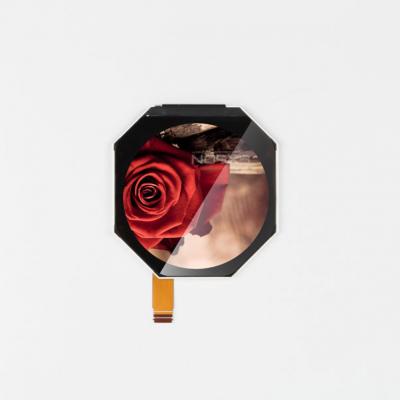In the dynamic landscape of interactive technology, touch panel modules have become the backbone of seamless user experiences. However, the key to unlocking the full potential of these modules lies in their customization and thoughtful design. Today, we explore the intricacies of touch panel module customization and the critical design considerations that influence their performance and user interactions.
At the core of touch panel module customization is the recognition that one size does not fit all. Understanding the specific needs and preferences of end-users is paramount. Whether it's a sleek control panel for a smart home device or a robust touchscreen for an industrial application, customizing touch panel modules ensures that the interface aligns seamlessly with user expectations, fostering a positive and engaging interaction.
The visual appeal of touch panel modules plays a crucial role in user satisfaction. Customization allows designers to harmonize the user interface with the overall aesthetics of the device. From color schemes and button placements to the overall layout, every aspect can be tailored to create a cohesive and visually appealing user experience.
The physical dimensions of the device heavily influence touch panel module customization. Whether it's a compact wearable or a large interactive display, the size and form factor dictate the layout and design possibilities. Customization ensures that the touch panel module seamlessly integrates into the device without compromising functionality or aesthetics.
The sensitivity of the touch panel and its ability to support multi-touch gestures are critical factors in user interactions. Customization allows for fine-tuning these features to match the specific requirements of the device. Whether it's a high-sensitivity touchscreen for precise controls or multi-touch capabilities for intuitive gestures, customization ensures that the touch panel module aligns with the device's intended use.
Customization extends to the selection of materials used in the touch panel module. Factors such as scratch resistance, durability, and the ability to withstand environmental conditions are essential considerations. For devices that may encounter harsh conditions or frequent use, customization allows for the incorporation of materials that enhance longevity without compromising on performance.
Devices utilizing touch panel modules can find themselves in a variety of environments, from indoor spaces to outdoor applications. Customization takes into account these environmental considerations, ensuring that the touch panel is designed to withstand temperature variations, humidity, and exposure to sunlight, providing a reliable and consistent user experience in diverse settings.
In the ever-evolving landscape of interactive technology, the customization of touch panel modules is the key to unlocking a new realm of possibilities. As manufacturers and designers continue to innovate, customization allows for the creation of touchscreens that not only meet but exceed user expectations. The future of touch panel modules lies in their adaptability and ability to seamlessly integrate into devices, shaping interactions that are not only intuitive but truly transformative. Embrace the power of touch panel module customization, and embark on a journey to tailor tomorrow's interactions today.
 How Touch Panel Modules Shape User ExperiencesJanuary 25, 2024In the fast-paced world of technology, user interfaces play a pivotal role in shaping our interactions with devices. Among the innovative solutions driving this evolution is the touch panel module, a ...view
How Touch Panel Modules Shape User ExperiencesJanuary 25, 2024In the fast-paced world of technology, user interfaces play a pivotal role in shaping our interactions with devices. Among the innovative solutions driving this evolution is the touch panel module, a ...view Exson Tech LCD 128x160: Compact and High-Definition, the New Trend in Future DisplaysJuly 1, 2024In the wave of the digital age, the display screen, as the core component of human-computer interaction, directly affects the user experience with its performance and quality. Among numerous display b...view
Exson Tech LCD 128x160: Compact and High-Definition, the New Trend in Future DisplaysJuly 1, 2024In the wave of the digital age, the display screen, as the core component of human-computer interaction, directly affects the user experience with its performance and quality. Among numerous display b...view How To Choose Lcd Hard Screen And Soft ScreenOctober 27, 2020What is the soft screen of LCD liquid crystal screen? Which is a hard screen, first let's introduce their concept. The hard screen technology of LCD adopts horizontal arrangement as the arrangemen...view
How To Choose Lcd Hard Screen And Soft ScreenOctober 27, 2020What is the soft screen of LCD liquid crystal screen? Which is a hard screen, first let's introduce their concept. The hard screen technology of LCD adopts horizontal arrangement as the arrangemen...view The Application Fields of LCD Bar Type LCD ScreenAugust 4, 2023With the rapid development of TFT LCD screen technology, there are more and more types of screens with increasingly powerful functions, presenting themselves in various poses and shapes, satisfying ou...view
The Application Fields of LCD Bar Type LCD ScreenAugust 4, 2023With the rapid development of TFT LCD screen technology, there are more and more types of screens with increasingly powerful functions, presenting themselves in various poses and shapes, satisfying ou...view The Crucial Role of Industrial TFT Displays in AutomationJanuary 29, 2024In the rapidly evolving landscape of industrial automation, technological advancements have become instrumental in enhancing efficiency, precision, and overall productivity. Among these innovations, I...view
The Crucial Role of Industrial TFT Displays in AutomationJanuary 29, 2024In the rapidly evolving landscape of industrial automation, technological advancements have become instrumental in enhancing efficiency, precision, and overall productivity. Among these innovations, I...view Application Analysis of the LCD Round LCD ScreenMay 26, 2023LCD round LCD screen - as the name suggests, is a circular shaped LCD screenMost of the LCD screens we normally encounter are square or rectangular, and circular screens are relatively rare. However, ...view
Application Analysis of the LCD Round LCD ScreenMay 26, 2023LCD round LCD screen - as the name suggests, is a circular shaped LCD screenMost of the LCD screens we normally encounter are square or rectangular, and circular screens are relatively rare. However, ...view Call us on:
Call us on:  Email Us:
Email Us:  2F-M1 XiaWei Industrial Park, GuanLan, LongHua District, SZ, China
2F-M1 XiaWei Industrial Park, GuanLan, LongHua District, SZ, China